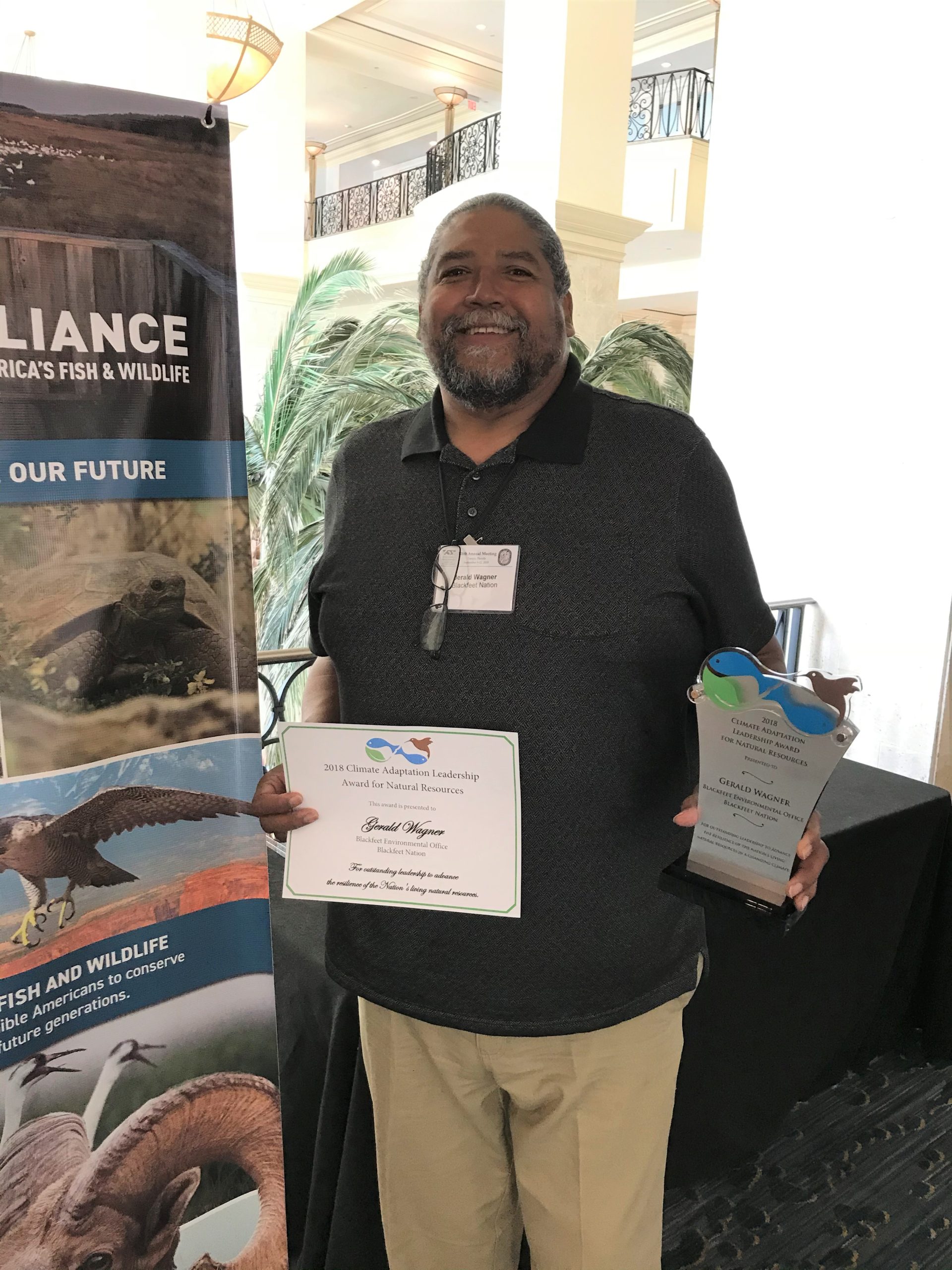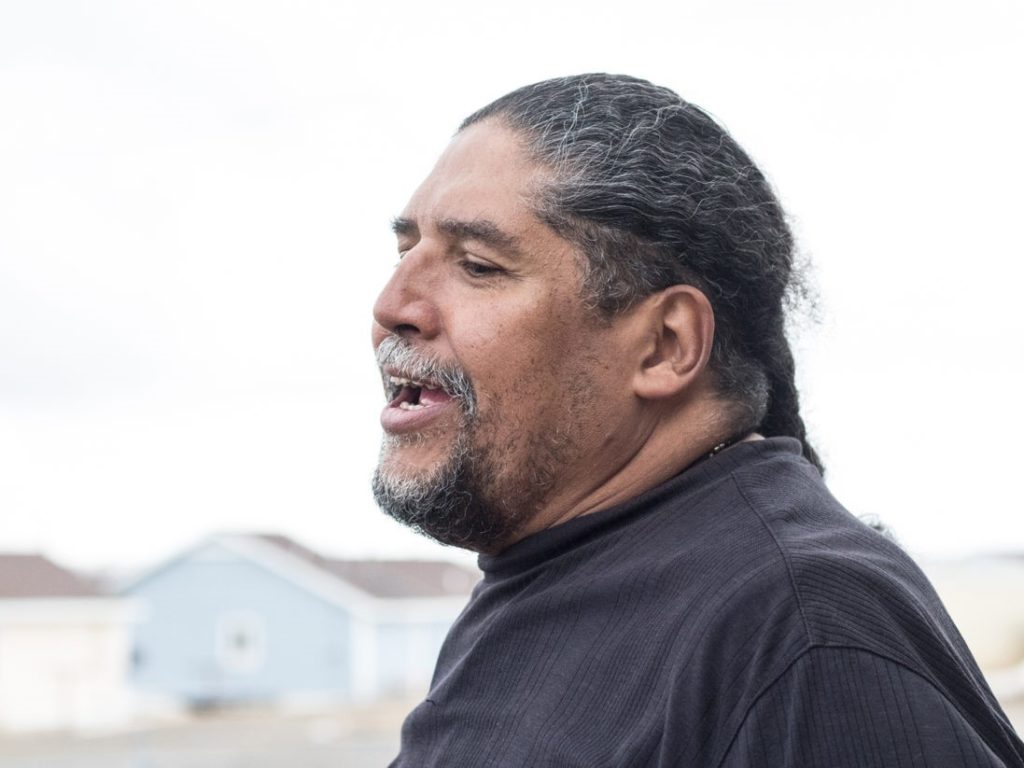Gerald Wagner is the Director of the Blackfeet Environmental Program and Director of Blackfeet Nation’s Drinking Water, Wastewater, and Solid Waste Program. We sat down with Gerald to discuss the insights he’s gained from his extensive work in conservation and his advice for conservation groups who want to partner with Tribal Nations and Indigenous Peoples.
Rising Through the Ranks

Gerald began his career at Montana State University, earning a degree in Biology and a minor in Native American Studies. After graduation, he moved to Seattle to conduct research for two years before moving back to Browning, Montana where he worked as a substitute teacher in the public school system. When a position opened with the Blackfeet Tribe’s Environmental Program, Gerald jumped at the opportunity to work as the Wetlands Program Manager. He quickly rose through the ranks of the Environmental program, becoming Active Director after just two years. Gerald has held the title of Director three times over the past 28 years, each tenure lasting 5 years.
Gerald’s accomplishments and titles transcended the boundaries of the Blackfeet Nation. He represented 28 Tribes in leadership roles with the Region 8 Tribal Caucus and the National Tribal Caucus, in the roles of Secretary, Vice Chair, and Chair—the latter of which he still holds. Gerald also works with the American Indian Environmental Office at the Environmental Protection Agency (EPA) in Washington D.C. to elevate the concerns of tribes and help prioritize actions and policies that address the needs of Indigenous communities.
These connections and interdepartmental partnerships were paramount in accruing funding from the EPA and receiving climate change specific grants to grow the Blackfeet Environmental Program. Gerald was quick to adapt and identify new avenues for funding and resources when the administration shifted in 2016. When funding from the EPA halted, he developed a relationship with the Center for Large Landscape Conservation and continued to build the Climate Program through private grants. Gerald remarked, “At a time when it was taboo for federal agencies [to address climate change], we were doing great work.”
Gerald chose the environmental field for its cross-program relevance. The Environmental program exists at the intersection of every other Tribal program. Gerald noted, “Environmental work touches on a lot of different areas. I’m in on our forestry program. I’m in on our fish and wildlife program. I’m in on planning. I’m in on land.”
A Roadmap for Success
Looking back over his career, Gerald credits his staff for the accomplishments of the department. He acknowledges, “When you have longevity of staff people, the program tends to prosper and does well. It’s not just me, I have good staff people.”
In branching out, Gerald has developed partnerships with the Department of the Interior, conservation non-profits and landscape collaboratives like the Roundtable on the Crown of the Continent. Next, he would like to work with other Tribal environmental directors in the state that need guidance. Gerald believes “We are only as strong as our weakest link. We have some Tribal Nations that are struggling so we need to help them become as strong as the rest of us so we can keep our circle connected and keep everybody moving in a positive direction. If we can do this regionally, we certainly can do the work nationally.”
With plans of retirement around the corner, Gerald’s priority is creating a smooth transition for his successor. “I want there to be a road map for someone so they can see what’s been done and take it further. I want to complete a comprehensive management plan that shows where we overlap with other programs and agencies so other tribes that have high turnover can see a good example.”
Turning points
When asked about significant turning points in his career, Gerald reflected on the significance of the Climate Change Program.
“In the environmental arena, you can feel sometimes like you’ve reached a stalemate and you’ve done all you could but when I hooked in with the Center for Large Landscape Conservation and the Crown of the Continent work, it opened up a whole other arena.
“It opened my eyes and turned on the lightbulb. I just knew there was a segment of the environmental work that I had been overlooking. I was able to work with some good people and develop this Climate Change Adaptation Planning document to work on health impacts of climate change, to bring the young people in. It was good timing. It reinvigorated me.”
Advice for outside partners
“There’s work that can be done. If you come here and we’re able to develop something, we learn from each other and both sides can benefit. We can live in two worlds as long as we understand both worlds.”
~ Gerald Wagner
Gerald has worked extensively with non-tribal partners throughout his career and has advice for those interested in engaging with Tribal Nations. “Look and see where there’s a need. Approach tribal leadership and program directors and explain what you have to offer.”
While Tribal Nations are rich in knowledge, they are often resource poor, so Gerald advises that organizations “come with resources to get things started.” Approach a potential partnership with an idea that benefits the land, the Indigenous people, and those that are non-Native as well. Demonstrate the compatibility of working together and forming a partnership—a partnership that’s genuine.
“There’s work that can be done. If you come here and we’re able to develop something, we learn from each other and both sides can benefit. We can live in two worlds as long as we understand both worlds.”
Resources
If you are interested in learning more about the Blackfeet Nation, please visit blackfeetclimatechange.com for information about the culture and traditions of the Blackfeet Tribe. Additionally, the Climate Change Adaptation Plan includes historical narratives that tie Blackfeet tradition, culture, and history to stewardship and highlight the land-based nature of the Tribe. The Blackfeet Community College is another excellent resource for learning about the Tribe’s history.
Exploring these online documents is a great place to start, but it’s just that. Gerald commented that “By using technology, you can learn a lot about a group of people, but it takes conversating with someone and sitting down one-on-one to really get to know the people.”



